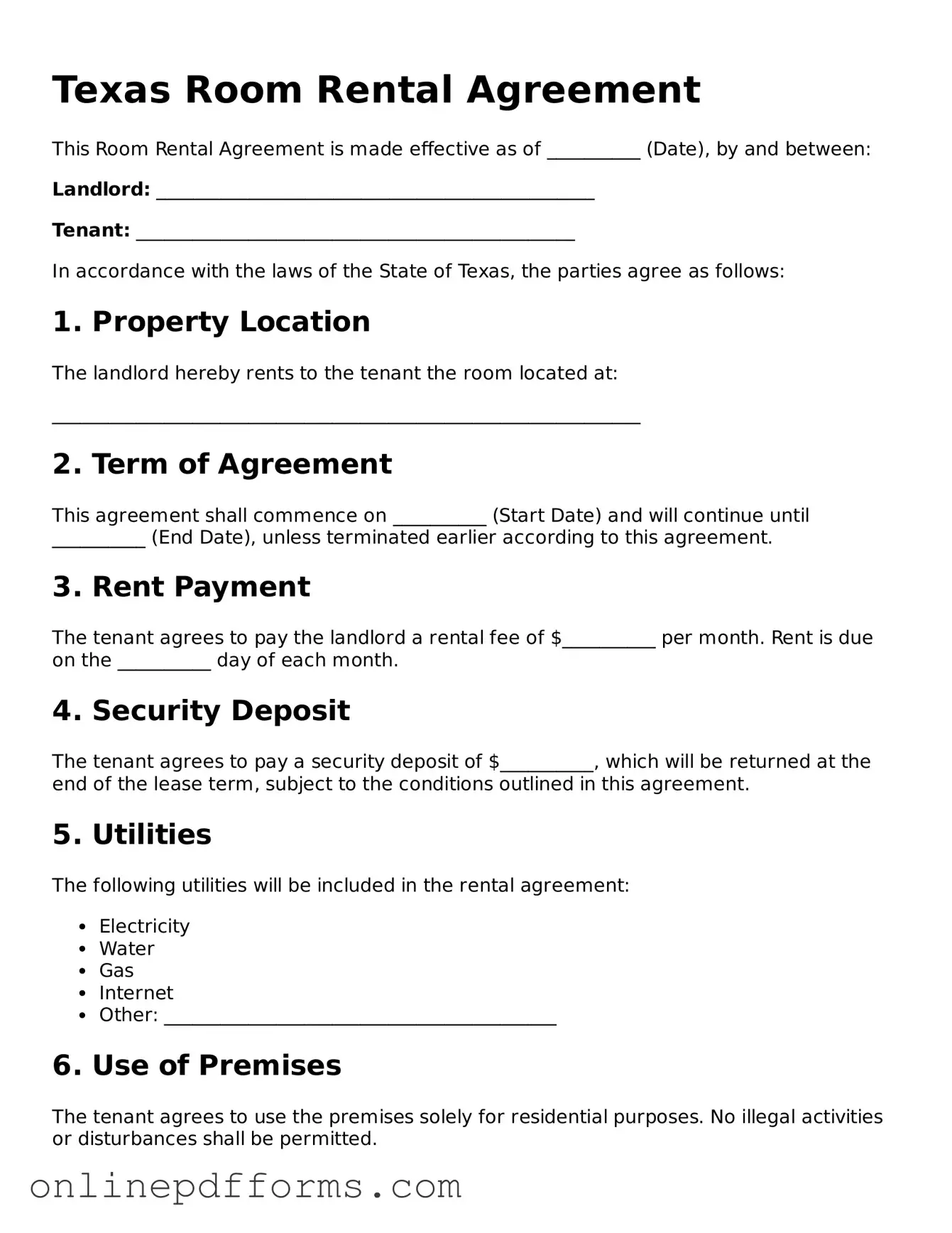The Texas Room Rental Agreement is similar to a standard Lease Agreement. Both documents outline the terms and conditions under which a tenant can occupy a property. They specify the rental amount, duration of the rental period, and the responsibilities of both the landlord and tenant. While a lease typically covers longer-term rentals, a room rental agreement may be used for shorter stays, making it more flexible for temporary housing situations.
When engaging in a transaction, it's vital to have a clear understanding of the legal documents involved. The detailed RV Bill of Sale process provides essential protection for both buyers and sellers of recreational vehicles, ensuring a smooth transfer of ownership while documenting the agreement comprehensively.
Another document that shares similarities is the Sublease Agreement. This agreement allows a tenant to rent out a portion of their rented space to another individual. Like the room rental agreement, it includes details about the rental terms, responsibilities, and payment. Both documents require the original landlord's consent to ensure that all parties are aware of the arrangement.
The Rental Application form is also comparable to the Texas Room Rental Agreement. While the rental agreement finalizes the terms of occupancy, the application is used to gather information about potential tenants. Both documents serve to protect the interests of the landlord by ensuring that the tenant meets certain criteria before entering into a rental agreement.
A Roommate Agreement is another document that aligns closely with the Texas Room Rental Agreement. This type of agreement is typically used when multiple individuals share a living space. It addresses issues like rent distribution, shared responsibilities, and house rules, similar to how a room rental agreement outlines obligations for a tenant renting a room in a larger property.
The Month-to-Month Rental Agreement is also similar. This type of agreement allows for more flexibility compared to a traditional lease. Like the Texas Room Rental Agreement, it can be terminated with proper notice, making it suitable for short-term arrangements. Both documents detail the rental amount and other essential terms, ensuring clarity for both parties.
The Commercial Lease Agreement shares some features with the Texas Room Rental Agreement, particularly in how it outlines the responsibilities of the tenant and landlord. While typically used for business properties, both agreements specify terms such as duration, payment, and maintenance responsibilities, ensuring that both parties understand their obligations.
A Vacation Rental Agreement is another document that resembles the Texas Room Rental Agreement. This type of agreement is used for short-term rentals, often in tourist areas. It includes similar terms regarding rental duration, payment, and house rules, making it clear what is expected from both the property owner and the renter.
The Co-Living Agreement is also akin to the Texas Room Rental Agreement. This document is used when individuals share a living space but may not be related or have a formal lease. It outlines shared responsibilities and expectations, just as a room rental agreement does, to ensure a harmonious living environment.
The Rent-to-Own Agreement can also be compared to the Texas Room Rental Agreement. While it typically involves a longer-term commitment with an option to purchase the property, both documents establish terms regarding rental payments and responsibilities. They provide a clear framework for both the landlord and tenant, ensuring that expectations are set from the beginning.
Lastly, the Tenant Screening Consent form is similar in that it is often used alongside the Texas Room Rental Agreement. This document allows landlords to check a potential tenant’s background and credit history. While it does not govern the rental terms directly, it serves as a crucial step in the rental process, helping landlords make informed decisions about who they allow to rent their property.
